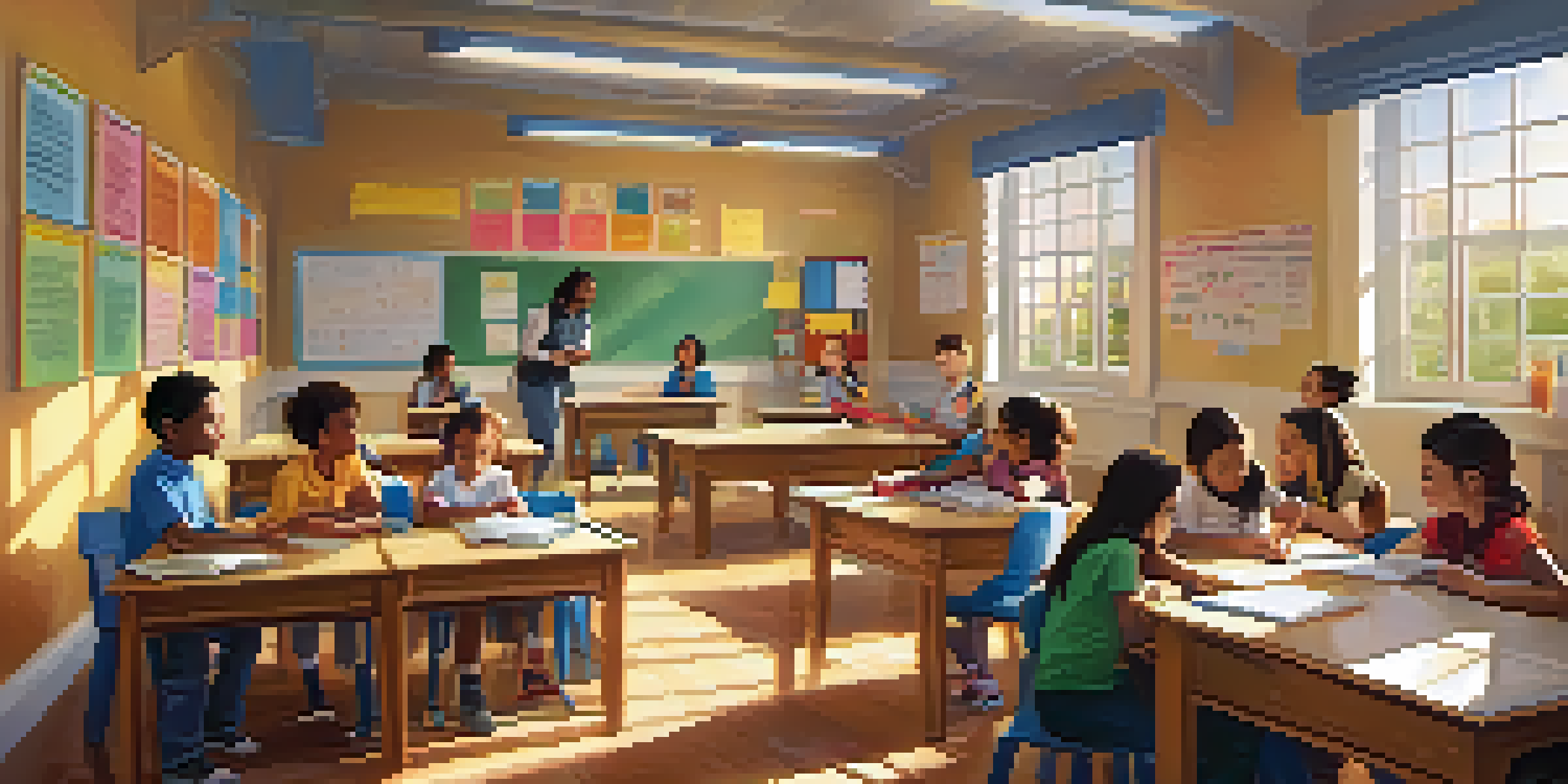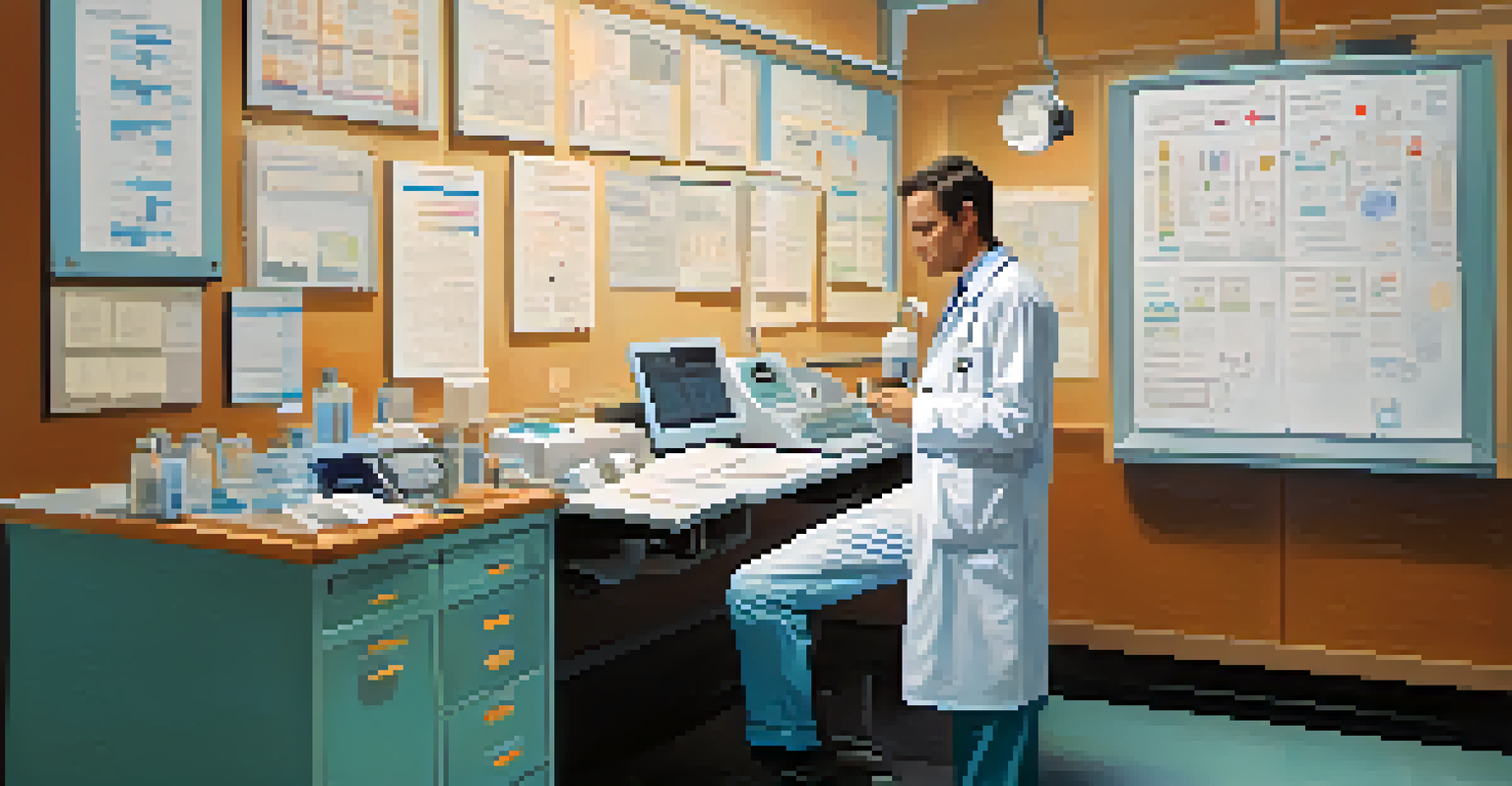Critical Thinking: The Foundation of 21st Century Skills

Understanding Critical Thinking and Its Importance
Critical thinking is the ability to analyze information objectively and make a reasoned judgment. In an age overflowing with data, it’s essential to sift through facts and opinions to discern what’s truly valuable. This skill empowers individuals to approach problems methodically, leading to informed decisions in both personal and professional settings.
The ability to think critically is one of the most important skills you can possess in the information age.
In the 21st century, where technology and misinformation are rampant, critical thinking serves as a beacon of clarity. It helps us navigate complex issues by encouraging skepticism and inquiry rather than blind acceptance. By fostering a critical mindset, we can better understand the world around us and make choices that reflect our values and goals.
Moreover, critical thinking is not just a personal asset; it's a crucial skill for collaboration and innovation. In team environments, diverse perspectives can clash, but critical thinking allows us to evaluate ideas objectively and work towards common solutions. Emphasizing this skill in education and the workplace can lead to more effective teamwork and creativity.
The Role of Education in Fostering Critical Thinking
Education plays a vital role in nurturing critical thinking skills from a young age. Traditional teaching methods often focus on rote memorization, but innovative educational approaches encourage students to question, analyze, and synthesize information. By incorporating problem-based learning and discussions, educators can create an environment that promotes critical engagement.

In classrooms that prioritize critical thinking, students learn to approach problems from multiple angles. They are encouraged to ask 'why' and 'how,' fostering a deeper understanding of subjects. For example, rather than merely learning historical facts, students might explore the causes and implications of significant events, developing a more nuanced perspective.
Critical Thinking Enhances Decision-Making
The ability to analyze information objectively is essential for informed decisions in personal and professional life.
Moreover, technology in education can enhance critical thinking. With access to vast amounts of information online, students must learn to evaluate sources and discern credible information. Digital literacy, therefore, becomes intertwined with critical thinking, equipping students with the tools needed to navigate the complexities of the information age.
Critical Thinking in the Workplace
In the modern workplace, critical thinking is highly valued by employers across various industries. It enables employees to tackle challenges effectively and devise innovative solutions. For instance, marketing teams might analyze consumer data to identify trends and create targeted campaigns, showcasing the importance of critical analysis in driving business success.
Critical thinking is the foundation of true learning. It empowers us to solve problems and make informed decisions.
Furthermore, critical thinking fosters better communication and collaboration among team members. When individuals can articulate their reasoning and consider alternative viewpoints, discussions become more productive. This collaborative approach not only enhances problem-solving but also builds a culture of respect and openness within organizations.
As the workforce evolves with new technologies and changing demands, critical thinking will remain a cornerstone skill. Employees who can think critically are more adaptable and prepared to navigate the uncertainties of the future. Investing in training programs that enhance these skills can significantly benefit organizations in the long run.
Real-World Examples of Critical Thinking in Action
Real-world applications of critical thinking can be seen in various fields, from healthcare to engineering. For instance, doctors use critical thinking when diagnosing patients, weighing symptoms against potential conditions to arrive at the best treatment plan. This analytical approach not only saves lives but also exemplifies the importance of critical thinking in high-stakes environments.
In the realm of technology, software developers often face complex problems that require critical analysis to solve. When debugging code, for example, they must evaluate various possibilities and systematically test each one until they identify the root cause of the issue. This process not only highlights critical thinking but also underscores its role in fostering innovation and efficiency.
Education Shapes Critical Thinkers
Innovative teaching methods that encourage questioning and analysis foster critical thinking skills from a young age.
Additionally, social movements often rely on critical thinking to challenge existing norms and advocate for change. Activists analyze societal issues, gather data, and construct compelling arguments to persuade others. This critical engagement is crucial in driving social progress and achieving meaningful change in communities worldwide.
Barriers to Critical Thinking and How to Overcome Them
Despite its importance, several barriers can impede critical thinking. Cognitive biases, such as confirmation bias, can lead individuals to favor information that aligns with their preexisting beliefs while disregarding contradictory evidence. Recognizing these biases is the first step toward cultivating a more objective mindset.
Another barrier is the overwhelming amount of information available today. With so many sources vying for attention, it can be challenging to sift through and identify credible data. To overcome this, individuals can develop a structured approach to evaluate information, focusing on the source, relevance, and evidence presented.
Moreover, fear of criticism or failure can stifle critical thinking. People may hesitate to express their thoughts or question established ideas due to concerns about pushback. Creating supportive environments that encourage open dialogue and constructive feedback can help individuals feel more comfortable engaging in critical discussions.
The Future of Critical Thinking in a Changing World
As we look to the future, critical thinking will be more crucial than ever. With rapid advancements in technology, the ability to analyze and interpret information critically will help individuals navigate new challenges. From artificial intelligence to climate change, critical thinkers will be essential in addressing complex global issues.
Moreover, the rise of remote work and digital communication emphasizes the need for critical thinking in collaboration. As teams become more diverse and dispersed, the ability to engage in thoughtful discussions and evaluate differing viewpoints will be key to successful teamwork. Organizations that prioritize critical thinking will likely thrive in this new landscape.
Overcoming Barriers to Critical Thinking
Identifying cognitive biases and creating supportive environments are key to enhancing critical thinking abilities.
Ultimately, fostering a culture that values critical thinking will create a more informed and engaged society. By encouraging individuals to question, analyze, and reflect, we can empower future generations to tackle the challenges ahead with confidence and creativity.
Practical Tips for Developing Critical Thinking Skills
Developing critical thinking skills is a lifelong journey that can be enhanced through practice. One practical tip is to regularly engage in reflective thinking, where you take the time to ponder decisions and their outcomes. By assessing what worked and what didn’t, you can refine your thought processes and improve future decision-making.
Another effective method is to challenge your assumptions. When you encounter a belief or idea you hold strongly, take a step back and question it. Consider alternative viewpoints and gather evidence that may contradict your perspective. This practice not only broadens your understanding but also strengthens your ability to think critically.

Additionally, engaging in discussions with diverse groups can sharpen your critical thinking. Conversations with individuals who have different backgrounds and opinions can provide fresh insights and encourage you to think outside the box. Embrace these interactions as opportunities to learn and grow in your critical thinking journey.